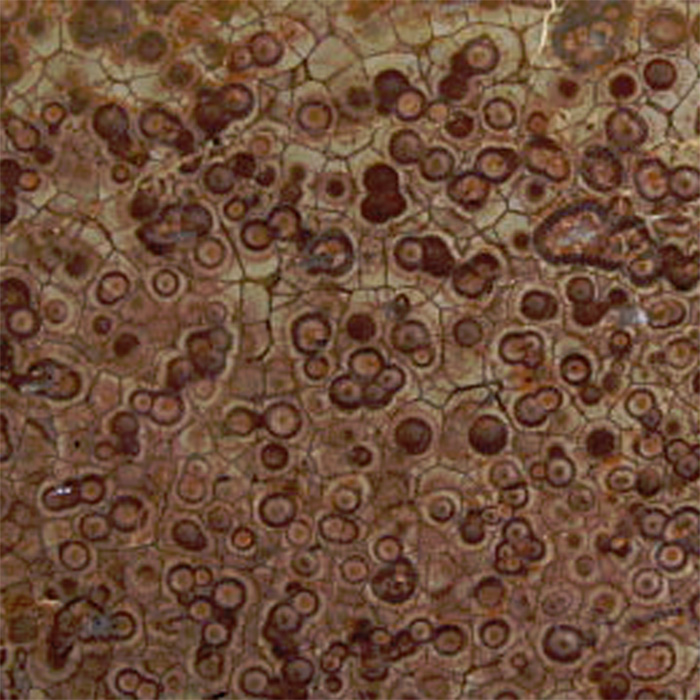Scientific Name: Variety of Chalcedony (itself a microcrystalline variety of quartz)
Group: Silicates – tectosilicates
Chemical composition: SiO2
Colors: Brown and black with bubbles of color.
Hardness: 7
Formation: Hexagol/trigonal crystal; Cryptocrystalline form
Principal Sources: Worldwide
Special Notes: Jasper, a form of chalcedony, is an opaque, impure variety of silica, usually red, yellow, brown or green in color; and rarely blue. It is found worldwide and has been used for jewelry since Paleolithic times. The name means “spotted or speckled stone”, and is derived via Old French jaspre and Latin iaspidem from Greek iaspis, from a Semitic language Hebrew yushphah, and ultimately from Persian yašp. Patterns arise during the consolidation process forming flow and depositional patterns in the original silica rich sediment or volcanic ash. Hydrothermal circulation is generally thought to be required in the formation of jasper.

